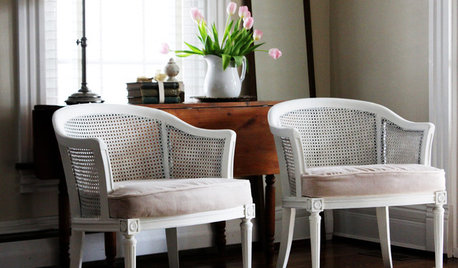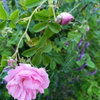Patriciae, what's your cure-all for thrips?
sherryocala
15 years ago
Related Stories

KITCHEN DESIGNKitchen Sinks: Fireclay Brims With Heavy-Duty Character
Cured at fiery temperatures, fireclay makes for farmhouse sinks that just say no to scratches and dents
Full Story
BATHROOM DESIGNConvert Your Tub Space to a Shower — the Planning Phase
Step 1 in swapping your tub for a sleek new shower: Get all the remodel details down on paper
Full Story
PETSSo You Want to Get a Cat
If you're a cat lover, the joys outweigh any other issue. If you haven't lived with one yet, here are a few things to know
Full Story
REMODELING GUIDES15 Ways to Design an Easy-Clean Home
Spend more time doing what you love with these pointers for minimizing cleaning needs throughout the entire house
Full Story
GARDENING GUIDES10 Easy Edibles for First-Time Gardeners
Focus on these beginner-friendly vegetables, herbs, beans and salad greens to start a home farm with little fuss
Full Story
LIFEThe Polite House: How Can I Kindly Get Party Guests to Use Coasters?
Here’s how to handle the age-old entertaining conundrum to protect your furniture — and friendships
Full Story
LANDSCAPE DESIGNWhat Kind of Gardener Are You? Find Your Archetype
Pick from our descriptions to create a garden that matches your personality and tells your story
Full Story
KITCHEN DESIGNKitchen of the Week: Great for the Chefs, Friendly to the Family
With a large island, a butler’s pantry, wine storage and more, this New York kitchen appeals to everyone in the house
Full Story
ARCHITECTURE4 Zurich Projects Build on High-Rise Livability
Generous landscaping, underground parking and terraces make these apartment complexes models of thoughtful housing
Full Story
BUDGET DECORATINGBudget Decorator: 8 Ways to Make Old Furniture Look Brand New
Learn stripping, staining, painting and reupholstering basics to make bargain-basement furniture worthy of center stage at home
Full StoryMore Discussions











patriciae_gw
sherryocalaOriginal Author
Related Professionals
Edmond Landscape Architects & Landscape Designers · Accokeek Landscape Architects & Landscape Designers · Fillmore Landscape Architects & Landscape Designers · Glendora Landscape Architects & Landscape Designers · Middle River Landscape Architects & Landscape Designers · Piqua Landscape Architects & Landscape Designers · Saint Charles Landscape Architects & Landscape Designers · White Oak Landscape Architects & Landscape Designers · Tempe Landscape Contractors · Pacifica Landscape Contractors · Wells Landscape Contractors · Montclair Swimming Pool Builders · San Antonio Swimming Pool Builders · South Riding Swimming Pool Builders · Inwood Siding & Exteriorspatriciae_gw
sherryocalaOriginal Author
patriciae_gw
sherryocalaOriginal Author
york_rose
sandy808
garden4510
sherryocalaOriginal Author
patriciae_gw
erasmus_gw